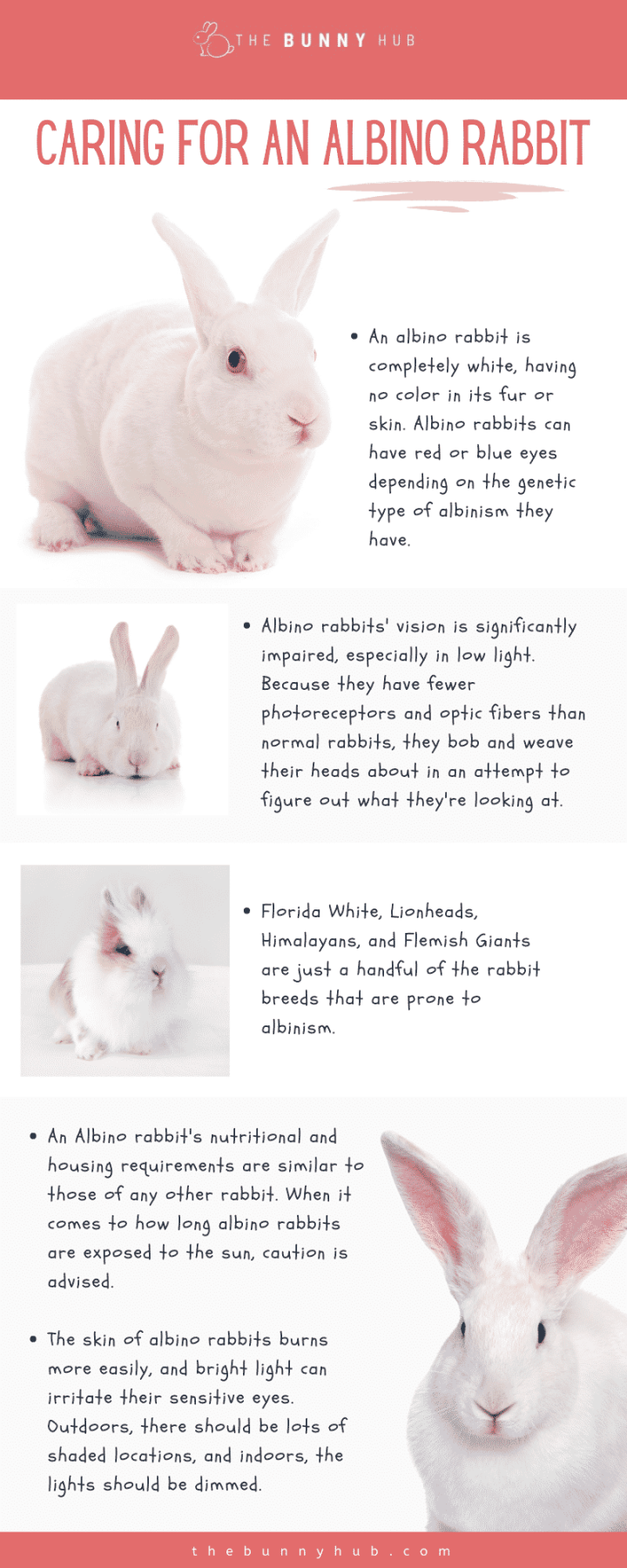How to Catch an Albino Rabbit?
Albino rabbits are a rare and fascinating sight in the wild. Their distinct white fur and striking red eyes make them highly sought after by rabbit enthusiasts and animal lovers alike. However, capturing an albino rabbit can be quite challenging, as they are naturally wary and elusive creatures. In this article, we will guide you through the steps to increase your chances of catching an albino rabbit.

1. Research their habitat
Before embarking on your quest to catch an albino rabbit, it is crucial to familiarize yourself with their habitat. Albino rabbits can be found in various locations, including forests, meadows, and even urban areas. They typically prefer areas with ample vegetation and hiding spots. Spend some time researching the specific habitat preferences of albino rabbits in your region to narrow down potential areas for your search.
2. Set up feeding stations
Albino rabbits, like their non-albino counterparts, are attracted to food sources. By setting up feeding stations in areas where you suspect albino rabbits might reside, you can increase your chances of capturing one. Use fresh vegetables, fruits, and rabbit pellets as bait. Ensure that the feeding stations are well-hidden and placed in safe locations to prevent attracting unwanted attention from predators or other animals.
3. Install trail cameras
To monitor and gather information about the presence of albino rabbits in a particular area, consider installing trail cameras. These motion-activated cameras are highly effective in capturing images and videos of animals passing by. Position the cameras strategically near the feeding stations or areas with signs of rabbit activity. Regularly check the footage to determine if albino rabbits have been visiting the location.
4. Construct humane traps
If you have confirmed the presence of albino rabbits in a specific area, constructing humane traps can be an effective method of catching them. Use materials such as wire mesh or wooden boards to build a sturdy trap with an entrance that allows the rabbit to enter but not escape. Bait the trap with fresh vegetables or rabbit pellets and place it near their feeding stations. Regularly check the traps and release any non-target animals unharmed.
5. Employ patience and camouflage
When attempting to catch an albino rabbit, patience is key. These rabbits are naturally wary and can quickly sense danger. Wear neutral-colored clothing that blends with the surroundings to reduce the chances of alarming the rabbits. Move slowly and quietly, minimizing sudden movements that may startle them. Remember that catching an albino rabbit requires time and persistence.
Frequently Asked Questions (FAQs)
1. Are albino rabbits more difficult to catch than regular rabbits?
Yes, albino rabbits are generally more challenging to catch than regular rabbits. Their lack of pigmentation makes them more visible to predators, causing them to be more cautious and elusive.
2. Are albino rabbits more sensitive to light and sound?
Albino rabbits do tend to have increased sensitivity to light and sound due to their lack of melanin. This heightened sensitivity further contributes to their elusive nature.
3. Is it legal to capture albino rabbits?
The legality of capturing albino rabbits varies depending on the region and local regulations. It is essential to consult with local wildlife authorities or organizations to ensure compliance with applicable laws.
4. Should I release a captured albino rabbit back into the wild?
Releasing a captured albino rabbit back into the wild is generally not recommended. Their lack of natural camouflage and increased visibility make them more vulnerable to predators. It is advisable to contact local wildlife experts who can provide appropriate care and a safe environment for the rabbit.
In conclusion, capturing an albino rabbit requires careful planning, patience, and understanding of their habitat and behavior. Follow the steps outlined in this article, and remember to prioritize the well-being of these unique creatures.
Related Articles…
Copyright Notice:
The images displayed here are sourced from the internet, with copyrights held by respective owners. For removal of any copyrighted image, please email us.